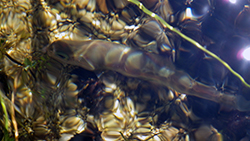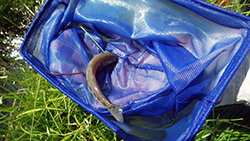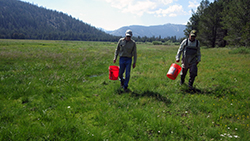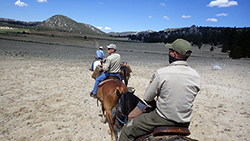





This summer marked the end of an incredible journey for four dozen of California’s designated state freshwater fish, the golden trout, as they returned home after 10 months away. The fish traveled more than 500 miles in tanks and buckets, by hand and by mule, en route to their native waters 9,000 feet up in the Sierra Nevada range.
The journey began last fall after CDFW scientists observed that ongoing drought conditions were severely impacting the rare trout’s mountainous habitat. A decision was made to rescue 52 fish – a representative population that could repopulate the stream and save the species if drought conditions worsened.
Golden trout are one of California’s most iconic trout species. They are native to only two stream systems in the southeast Sierra Nevada – Golden Trout Creek, and the South Fork Kern River in Tulare County. Volcanic Creek, which is home to the rescued fish, connects with Golden Trout Creek during runoff and high-water level years.
The journey began in September 2016, when fisheries biologists made the two-day trek into the mountains to gather the trout. The captured fish were transported to the American River Trout Hatchery near Sacramento, where technicians monitored them, often around the clock. After nine months at the hatchery, the fish were ready to start the long trek back to their home waters. Crew members transferred the fish from the hatchery to a fish tanker truck and hauled them more than seven hours overnight to the trailhead at an elevation of 10,000 feet in the southern Sierra.
The crew met up with a CDFW team that would escort the fish on horseback, 16 miles into the Inyo National Forest. Federal laws forbids motorized vehicles on wilderness land, which left the team no option but to transport the fish by mule train in fish cans.
The operation took tremendous teamwork from multiple divisions in CDFW and the National Forest Service. Ultimately, the CDFW team successfully returned 48 fish to their natural element. Four died in captivity over the winter. CDFW officials consider that a normal mortality rate. Scientists remain optimistic that these iconic fish will continue to thrive and perhaps even be on-track for a brighter future.
 See related VIDEO.
See related VIDEO.